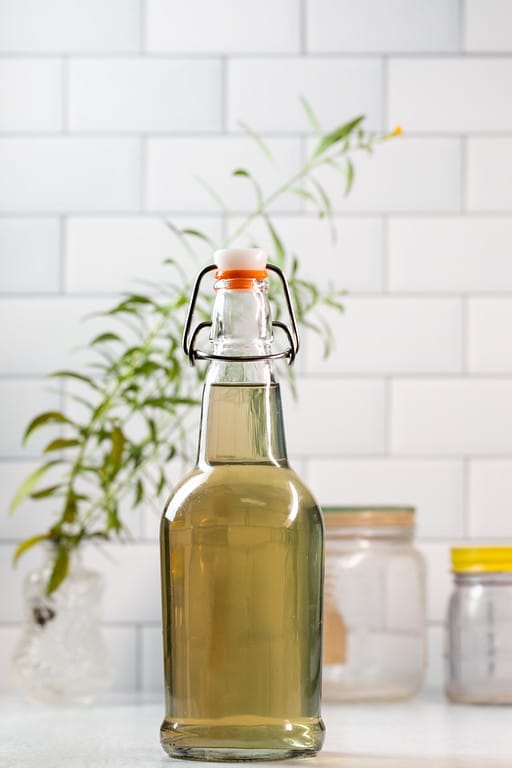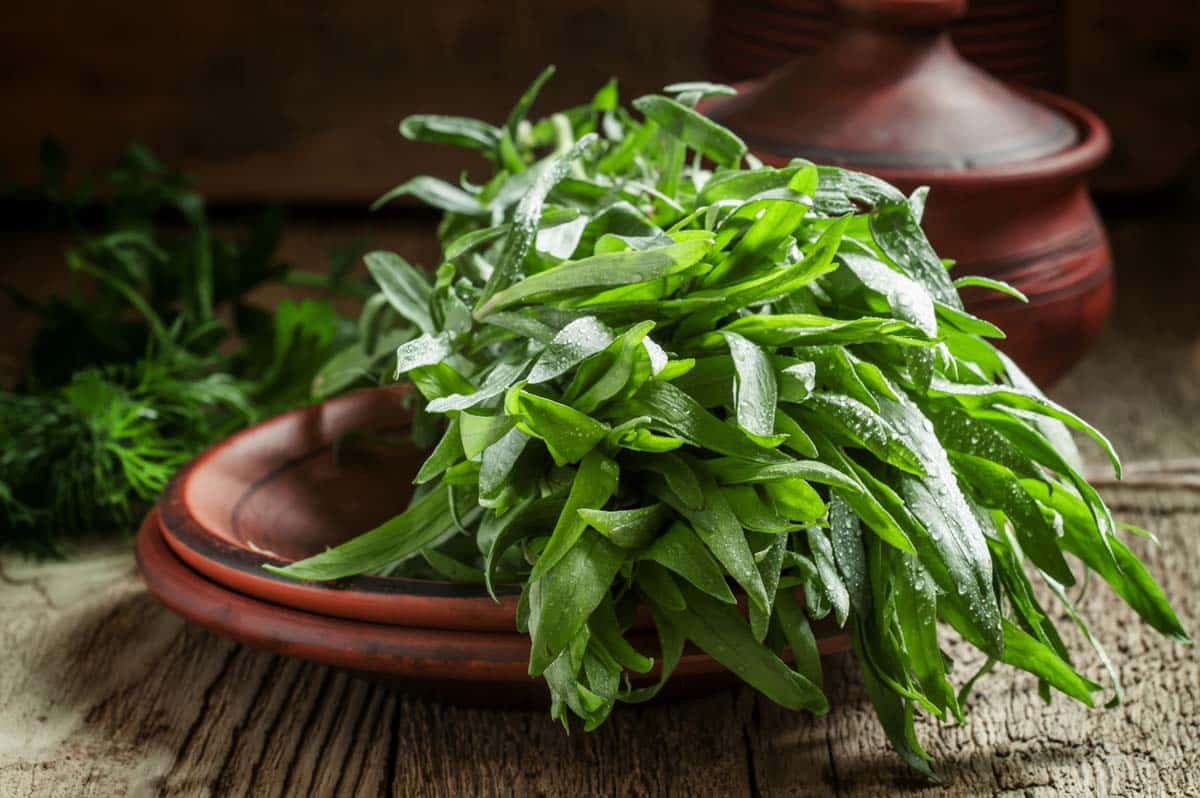How long does tarragon vinegar last?

Tarragon vinegar, renowned for its delicate flavor and aromatic charm, is a staple in many kitchens around the world. Crafted by infusing tarragon leaves into vinegar, this culinary gem adds depth and complexity to a variety of dishes, from salads and dressings to marinades and sauces. However, like all food products, tarragon vinegar has a finite shelf life, and understanding factors that influence its longevity is essential for maintaining quality and flavor.
Factors Affecting Shelf Life:
Several factors contribute to the shelf life of tarragon vinegar, including the quality of ingredients, production methods, storage conditions, and the presence of contaminants. The quality of tarragon leaves used in vinegar production directly impacts the final product’s flavor and stability. Fresh, high-quality tarragon leaves yield vinegar with vibrant flavor and aroma, while stale or wilted leaves may result in a less flavorful and less stable product.
Production methods also play a crucial role in determining tarragon vinegar’s shelf life. Proper sanitation and hygiene during the infusion process help prevent contamination and microbial growth, ensuring the vinegar remains safe for consumption. Additionally, the acidity level of the vinegar, typically around 5%, acts as a natural preservative, inhibiting the growth of bacteria, mold, and yeast.
Storage Conditions:
Proper storage is paramount to extending the shelf life of tarragon vinegar and maintaining its quality over time. The vinegar should be stored in a cool, dark place away from direct sunlight and heat sources, as exposure to light and heat can degrade its flavor and accelerate deterioration. Ideally, tarragon vinegar should be stored in a tightly sealed glass bottle or jar to prevent air and moisture from entering, which can promote spoilage and oxidation.
Additionally, tarragon vinegar should be kept away from strong-smelling foods and substances, as it can absorb odors and flavors from its surroundings. Storing the vinegar in a pantry or cupboard away from pungent spices, cleaning products, or aromatic foods helps preserve its delicate flavor and aroma.
Shelf Life Extension Strategies:
While tarragon vinegar typically has a long shelf life, there are several strategies you can employ to extend its longevity and maintain optimal quality:
- Proper Sealing: Ensure the vinegar bottle or jar is tightly sealed after each use to prevent air from entering and oxidation from occurring.
- Refrigeration: While tarragon vinegar does not require refrigeration, storing it in the refrigerator can help prolong its shelf life, especially if you live in a warm climate or if the vinegar will not be used frequently.
- Avoid Contamination: Use clean utensils and avoid introducing contaminants, such as food particles or debris, into the vinegar bottle or jar. Contaminants can promote microbial growth and spoilage.
- Rotate Stock: If you use tarragon vinegar infrequently, consider rotating your stock by using older bottles first and replenishing your supply with fresh vinegar. This ensures you always have vinegar with optimal flavor and quality on hand.
- Check for Spoilage: Periodically inspect tarragon vinegar for signs of spoilage, such as off-putting odor, cloudiness, or mold growth. If the vinegar exhibits any of these signs, discard it immediately.
Determining Shelf Life:
The shelf life of tarragon vinegar can vary depending on storage conditions, quality of ingredients, and production methods. Generally, properly stored and sealed tarragon vinegar can maintain its quality for up to two years or more. However, it is essential to use your senses to determine if the vinegar is still suitable for consumption.
Tarragon vinegar, prized for its unique flavor and versatility, is a beloved ingredient in countless recipes. However, to ensure that its delightful taste remains intact, it’s crucial to understand how long it can last and how best to store it.
Assessing Freshness:
Determining the freshness of tarragon vinegar involves a sensory evaluation. Visually inspect the vinegar for any changes in color or clarity. While slight sedimentation is normal, cloudiness or discoloration may indicate spoilage. Additionally, take note of any unusual odors or off-flavors, as these can signal bacterial growth or oxidation.
Utilizing Proper Storage:
Proper storage is paramount in preserving the integrity of tarragon vinegar. Store it in a cool, dark place away from heat sources and direct sunlight. Exposure to light and heat can degrade the vinegar’s quality and hasten its deterioration. Additionally, ensure that the bottle or jar is tightly sealed to prevent air from entering and causing oxidation.
Understanding Shelf Life:
While tarragon vinegar can have a long shelf life when stored correctly, its exact duration can vary depending on factors such as production quality and storage conditions. Generally, commercially produced tarragon vinegar can last for up to two years or more when unopened and stored properly. Once opened, it’s best to consume the vinegar within six months to a year for optimal flavor.
Enhancing Longevity:
To extend the shelf life of tarragon vinegar, consider refrigerating it, especially if you live in a warm climate or if you anticipate infrequent use. Refrigeration helps slow down the oxidation process and preserves the vinegar’s freshness. Additionally, avoid transferring tarragon vinegar into non-acid-resistant containers, as certain materials, such as metal or plastic, can react with the acidity of the vinegar and compromise its quality.
Adhering to Hygienic Practices:
Maintaining hygienic practices when handling tarragon vinegar is essential for preventing contamination and spoilage. Always use clean utensils and avoid cross-contamination with other foods or liquids. Keep the bottle or jar tightly sealed when not in use and avoid introducing moisture or foreign particles into the vinegar.
Discerning Signs of Spoilage:
If you notice any signs of spoilage, such as a cloudy appearance, unusual odor, or off-flavor, err on the side of caution and discard the vinegar. Consuming spoiled vinegar can lead to foodborne illness and adverse health effects. When in doubt, trust your senses and opt for a fresh bottle of tarragon vinegar.
In conclusion, tarragon vinegar is a versatile and flavorful ingredient that adds depth and complexity to a variety of culinary creations. By understanding factors that influence its shelf life and employing proper storage and handling techniques, you can extend the longevity of tarragon vinegar and ensure it remains a cherished addition to your kitchen for years to come. Whether drizzled over salads, used as a marinade, or incorporated into sauces and dressings, tarragon vinegar delights the palate and enhances the flavor of countless dishes, making it a valuable staple for any home cook.
FAQ:
1. How long does tarragon vinegar last? Tarragon vinegar can last up to two years or more when stored properly in a cool, dark place away from heat sources and direct sunlight. However, once opened, it’s best to consume it within six months to a year for optimal flavor.
2. Can I refrigerate tarragon vinegar to extend its shelf life? Yes, refrigerating tarragon vinegar can help prolong its freshness, especially in warm climates or if it will be used infrequently. Refrigeration slows down the oxidation process and preserves the vinegar’s flavor.
3. What are the signs of spoilage in tarragon vinegar? Signs of spoilage in tarragon vinegar include cloudiness, unusual odors, or off-flavors. If you notice any of these signs, it’s best to discard the vinegar to avoid potential foodborne illness.
4. Can I store tarragon vinegar in a non-acid-resistant container? It’s best to store tarragon vinegar in a glass bottle or jar specifically designed for acidic liquids. Avoid transferring it to containers made of materials that can react with the vinegar’s acidity, such as metal or plastic.
5. How can I tell if tarragon vinegar is still good to use? You can assess the freshness of tarragon vinegar by visually inspecting it for changes in color or clarity and smelling it for any unusual odors. If it looks or smells off, it’s best to discard it.
6. Does tarragon vinegar need to be tightly sealed? Yes, it’s essential to tightly seal the bottle or jar of tarragon vinegar after each use to prevent air from entering and causing oxidation. Proper sealing helps maintain the vinegar’s quality and flavor.
7. Can I use tarragon vinegar past its expiration date? While tarragon vinegar may still be safe to consume past its expiration date if it shows no signs of spoilage, it’s best to adhere to the recommended storage guidelines and discard any vinegar that appears or smells off.
8. How should I store tarragon vinegar to prevent contamination? Store tarragon vinegar in a clean, dry place away from strong-smelling foods and substances. Use clean utensils when handling the vinegar to prevent contamination, and avoid introducing moisture or foreign particles into the bottle or jar.
9. Can I use tarragon vinegar for cooking and cleaning? Yes, tarragon vinegar can be used in cooking to add flavor to dishes or as a cleaning solution to remove stains and odors. However, ensure that you use separate bottles for culinary and cleaning purposes to prevent cross-contamination.
10. Are there any health benefits to consuming tarragon vinegar? Tarragon vinegar contains antioxidants and may offer some health benefits, such as supporting digestion and providing a source of natural acidity in the diet. However, it’s essential to consume it in moderation as part of a balanced diet.
Related Posts
Does tarragon have side effects?
-
Posted by
akshita aishwarya
- 0 comments



